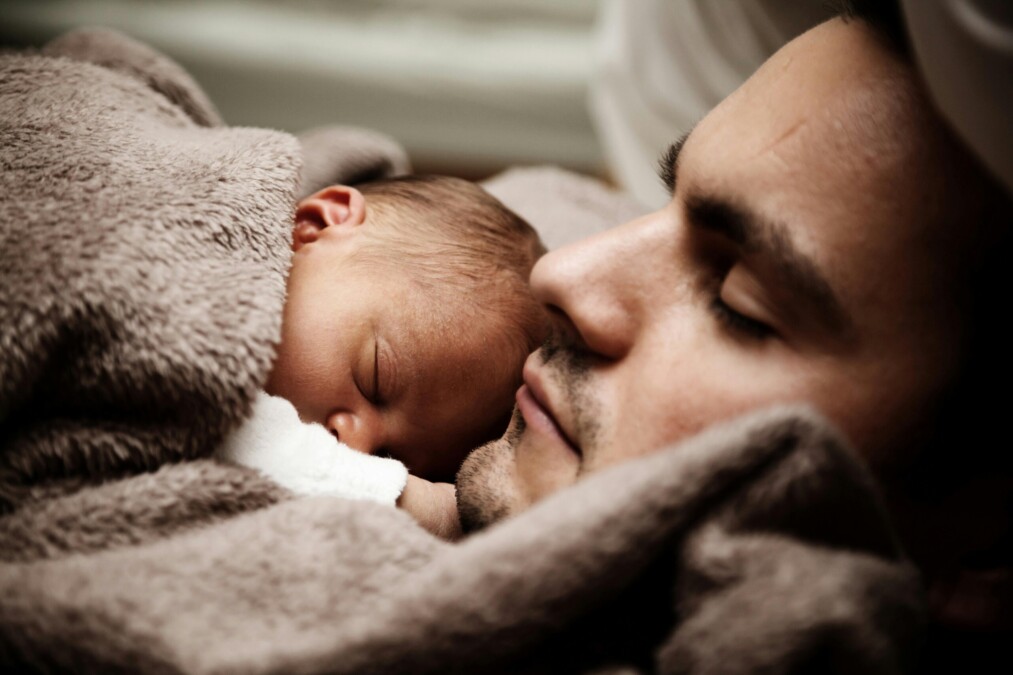Infant sleep patterns are complex and influenced by a multitude of factors, including biology, culture, and parenting practices. This article delves into the complexities of infant sleep, exploring cultural variations, developmental milestones, and the role of parental responses. We will examine the impact of sleep training, the importance of nutrition, and the significance of maternal well-being on infant sleep patterns. By understanding these factors, we can gain valuable insights into promoting healthy sleep habits for both infants and parents.
Cultural Variations in Infant Sleep Practices
In many cultures, night wakings in infants are not seen as problematic. Parents who co-sleep with their infants tend to view their child’s nighttime awakenings as natural and are often less distressed by them. Co-sleeping, whether reactive (due to an infant’s distress) or voluntary (chosen as a parenting practice), can foster a sense of connection and reassurance, promoting less anxiety among parents. On the other hand, Western sleep training methods, which emphasize promoting self-soothing and reducing parental involvement, may encourage different perceptions of infant sleep. These methods, typically aimed at reducing night wakings, are grounded in the assumption that excessive parental involvement interferes with an infant’s ability to develop self-regulation and soothing skills. As a result, many behavioral interventions focus on gradually withdrawing parental presence to encourage the infant’s ability to self-soothe. However, this approach often leads to infant protest and crying, which can be challenging for all parents.
Infant Sleep Development and the Impact of Behavioral Interventions
Research has consistently highlighted the significant changes in infant sleep across the first year of life. According to Heraghty et al. (2008), infants display distinct electroencephalography (EEG) patterns compared to adults, with more active sleep (similar to REM sleep in adults) in early infancy, and a reduction in active sleep over time. By six months, infants typically spend about 25% of their sleep in active sleep, down from 50% at birth. Infants’ total sleep time gradually decreases from approximately 17 hours per day at birth to about 14.5 hours at one year, with a greater proportion of sleep occurring at night as circadian rhythms become established by around four months of age.
Despite these developmental trends, Galland et al. (2012) found significant variation in sleep patterns across different populations, with infants’ sleep durations ranging from 9 to 20 hours per day in the first few months of life. This variability in sleep duration is influenced not only by biological factors but also by cultural and environmental factors that shape parental expectations and practices.
Night Wakings and Cultural Perceptions
Night waking in infants is a common experience, but the way it is perceived and managed varies widely across cultures. In Western contexts, night wakings are often seen as a problem that needs to be addressed through sleep training. However, research suggests that cultural context plays a significant role in shaping these perceptions. McKenna (2014) argued that cultural norms and maternal expectations are key factors in determining how night wakings are viewed, noting that unrealistic expectations for infant sleep may contribute to the creation of “sleep problems” that experts are then called upon to solve. Ball (2013) further emphasized the importance of providing parents with information about normal infant sleep patterns to help alleviate anxiety and normalize night waking’s, which are a natural part of infant development.
The Role of Nutrition in Infant Sleep
Infant nutrition plays a central role in sleep patterns. Early in life, infants wake frequently during the night to meet their nutritional needs. Breastfed infants, in particular, tend to wake more often and are more easily arousable than formula-fed infants. This increased frequency of night waking is associated with a lower risk of sudden infant death syndrome (SIDS), highlighting the protective benefits of breastfeeding (Bartick et al., 2018; McKenna & McDade, 2005).
Furthermore, studies have shown that maternal responsiveness to night wakings—such as providing timely feedings—can help reduce infant distress. For example, infants whose mothers respond quickly to their cries tend to experience shorter crying episodes (Barr & Elias, 1988). This pattern of responsive caregiving supports the development of a strong parent-infant bond and contributes to the infant’s growing sense of security.
The Debate Over Sleep Training
Sleep training, which involves methods like “cry it out” or graduated extinction, aims to help infants learn to self-soothe and sleep independently. While some studies suggest that sleep training can lead to short-term improvements in sleep duration and self-settling behavior, there are concerns about its potential negative effects. Research has shown that early sleep training may contribute to increased crying, maternal anxiety, and even disruption of breastfeeding (Douglas & Hill, 2013). Additionally, there is no conclusive evidence that sleep training improves long-term outcomes for infant sleep or reduces the risk of sleep-related issues later in childhood.
Moreover, behavioural interventions that prioritize sleep training in the first six months of life may overlook the developmental realities of infant sleep. Douglas & Hill (2013) argued that the belief that behavioural interventions improve outcomes for both mothers and babies in the early months is based on culturally constructed assumptions about sleep and ignores the possibility that infant sleep behaviours are developmentally appropriate.
The Neurodevelopmental Perspective on Infant Sleep
Understanding infant sleep requires consideration of neurodevelopmental factors. Infants’ sleep is regulated by both homeostatic sleep pressure and circadian rhythms. Homeostatic sleep pressure increases as the day progresses, compelling infants to sleep after prolonged wakefulness. Additionally, the circadian pacemaker, which helps regulate the sleep-wake cycle, begins to function around four months of age, further influencing sleep patterns (Jenni & Carskadon, 2007).
Despite these natural sleep regulators, many infants still require frequent night-time care, as evidenced by the findings of Henderson et al. (2010), who found that two-thirds of infants at three months and half of infants at six months signal for parental help during an eight-hour sleep period. The frequency of these nocturnal signals reflects the infant’s biological need for comfort, nourishment, and security rather than a sleep disorder that needs to be corrected.
The Impact of Sleep Practices on Maternal Wellbeing
Maternal sleep quality is closely linked to infant sleep patterns. Research has shown that while mothers of breastfeeding infants wake more frequently during the night to respond to their infants’ needs, they may experience improved sleep quality overall compared to mothers of formula-fed infants (Dennis & McQueen, 2009; Doan et al., 2014). Furthermore, maternal sleep efficiency has been associated with lower levels of postnatal depression, highlighting the importance of a supportive caregiving environment for both mother and baby (Dorheim et al., 2009; Goyal et al., 2009).
Sleep practices that promote maternal well-being, such as maintaining a consistent daily routine, obtaining sunlight exposure in the morning, and managing stress through social and physical activities, can also support healthy sleep patterns for both mothers and infants (Brown et al., 2002; Cheek et al., 2004). These practices contribute to the overall health and mental well-being of the family unit, fostering a positive environment for both parent and child.
Conclusion: A Holistic Approach to Infant Sleep
In conclusion, infant sleep is a dynamic and multifaceted process influenced by biological, developmental, and cultural factors. Understanding infant sleep requires an appreciation of normal sleep patterns, the role of nutrition, the impact of parental practices, and the cultural context in which these behaviours occur. While sleep training methods may be effective for some families, they should be applied with caution, particularly in the early months of life when sleep behaviours are still developing. By recognizing the natural variability in infant sleep and promoting a flexible, responsive approach to night-time care, parents can foster healthy sleep habits and a strong emotional bond with their infants.
References
- Bartick, M., et al. (2018). The impact of breastfeeding on sudden infant death syndrome.
- Barr, R., & Elias, B. (1988). Maternal responses to infant night waking and its effects on crying.
- Brown, B., Buboltz, W., & Soper, B. (2002). The influence of lifestyle factors on infant sleep.
- Cheek, P., Shaver, A., & Lentz, D. (2004). Maternal well-being and infant sleep patterns.
- Dennis, C., & McQueen, K. (2009). Breastfeeding and maternal sleep quality.
- Doan, T., Gay, C., Kennedy, H., Newman, R., & Lee, K. (2014). Breastfeeding and infant sleep.
- Douglas, P., & Hill, P. (2013). The implications of early sleep training on infant behavior.
- Galland, B., et al. (2012). A review of infant sleep patterns.
- Jenni, O., & Carskadon, M. (2007). The neurodevelopmental regulation of sleep in infants.
- Koa, R., & Douglas, P. (2013). The cultural influence on sleep training and infant behavior.
- McKenna, J. (2014). Cultural expectations and infant sleep.
- Wooding, C., Boyd, L., & Geddis, D. (1990). Sleep variability in infant







